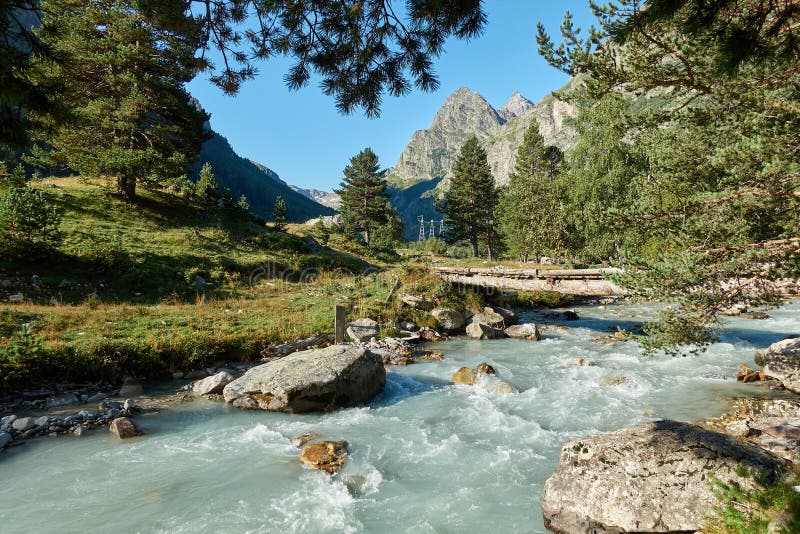

In the course of history, a unique farming culture with magnificent farmhouses, Alpine languages (Ladin, Friulian, Romansh) and religious celebrations and customs developed in the Alpine regions. The name of the Alps is derived from the Alemannic word " Alp" ("pasture") but the mountain range also shares etymological characteristics with the word " alpine" (mountainous). However, many animals of in the Alps such as chamois, ibexes, marmots, snow voles or golden eagles have retreated to the areas above treeline. The animals which live at lower altitudes are mostly the same as the ones in the local lowland. At altitudes of over 3,000 metres of height, the vegetation is getting sparse and only grows on areas which are not covered in snow in summer. edelweiss, gentian) and meadows characterise the areas between 2,000 and 3,000 metres of height. juniper, rhododendron), flowering plants (e.g. Up to 2,000 metres of height, oak and spruce forests dominate the landscape, while shrubs (e.g. The flora in the Alps differs depending on the altitude. Well-known peaks in the Italian Alps, which are the destination of many hikers and mountaineers, are Mont Blanc (4,810 m), the Gran Paradiso (4,061 m) and the Matterhorn (4,478 m) in the Aosta Valley, the Tre Cime di Lavaredo (2,999 m) in South Tyrol and the Marmolada (3,343 m) in Trentino. The Alps have a great number of mountain groups, chains and formations which are more than 4,000 metres above sea level. Nature - Famous peaks surrounded by alpine vegetation In this way, humid Atlantic air, cold masses of air coming from the north, dry and continental winds as well as warm air from the south determine the local weather. The Alps constitute an important climatic divide in Europe, which separates the Atlantic climate zone from the temperate and the Mediterranean one. Its highest point is Mont Blanc, which is 4,810 metres high. It accommodates countless mountain groups, glaciers and beautiful peaks with heights of over 4,000 metres. The Italian part of the Alps lies in the north of the country in the regions of the Aosta Valley, Lombardy, Piedmont and Friuli-Venezia Giulia. The Western Alps run from the Ligurian Sea to Mont Blanc in the Aosta Valley, the Central Alps extend to the Brenner Pass in South Tyrol and the Eastern Alps run as far as Slovenia. In France and Italy, the mountain chain is divided into a central, eastern and western part. They cover an area which is 200 kilometres wide and almost 1,200 kilometres long and extend over several countries ( France, Monaco, Switzerland, Liechtenstein, Germany, Austria, Slovenia, Italy). The Alps are a significant mountain range in the heart of Europe.


 0 kommentar(er)
0 kommentar(er)
